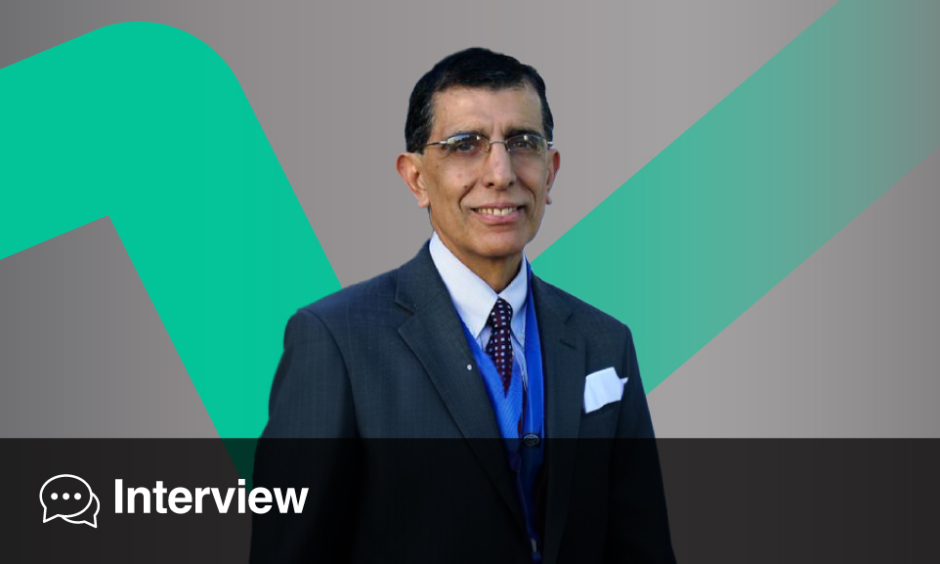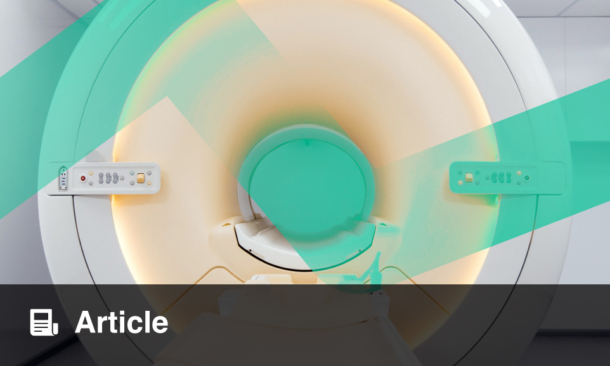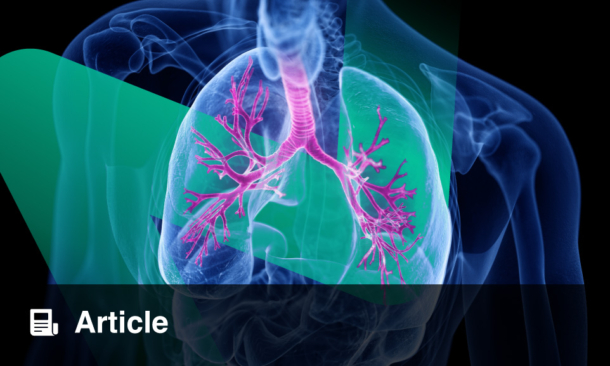Antonio Anzueto | University of Texas Health Science Center at San Antonio, Department of Medicine, Pulmonary/Critical Care, South Texas Veterans Health Care System, San Antonio, USA
Citation: EMJ Respir. 2024;12[1]:104-107. https://doi.org/10.33590/emjrespir/FYCR8210.
![]()
What has led you to pursue a career in pulmonary medicine, and what led you to specialise in chronic obstructive pulmonary disease (COPD)?
Before I decided to pursue a career in pulmonary medicine, I did internal medicine, and was really fascinated by dyspnoea (difficulty breathing). I found it interesting how some people would experience shortness of breath, which not only made them uncomfortable but also led to significant drops in their oxygen levels, in turn making them significantly ill. Eventually, this led me to multiple clinical interests. I started working with patients suffering from chronic bronchitis and COPD, as well as those with acute respiratory injuries. In the USA, the fields of pulmonary and critical care are often intertwined, which allowed me to treat acutely ill patients in the intensive care unit who also had underlying pulmonary diseases.
I realised that understanding the underlying diseases is crucial in treatment, for example, in COPD, when patients develop acute respiratory failure, it is triggered by events like pneumonia. My goal was to understand what exacerbates these conditions and how we could prevent some of those conditions that lead to multiorgan failure, sepsis etc. I have been focused on what seems like different areas of pulmonary medicine, like pneumonia, respiratory failure, and COPD, but all have a lot in common. At the end of the day, it will be the interactions between the patient and multiple conditions that will lead to acute respiratory failure.
My interest in COPD specifically grew over the years, in part because, back in the late 1980s and early 1990s, we had very little understanding of the disease and no effective treatments. It was an underdefined condition, which made it both challenging and fascinating. When I began to see patients, we had no treatments, no understanding, and no definition of the disease. Over the past 24 years, the Global Initiative for Chronic Obstructive Lung Disease (GOLD) has provided a framework that revolutionised our approach to COPD. Since its first publication in 2001, a tremendous amount of research has been conducted, leading to effective therapies that can slow the progression of COPD and even decrease mortality.
Since starting your career, what do you think has been the most significant change in COPD management and treatment?
I think it’s three-fold. One is that we now have a better understanding from the epidemiological point of view. Initially, we had observational cohorts that were limited and not well established, and now we have long-term cohorts of individuals. We also now recognise that different conditions can precipitate disease. For example, we studied at length the use of tobacco, and its impact on the disease, and recognised it as an important cause of COPD; but in the world biomass exposure, there are also pulmonary infections like tuberculosis and some genetic conditions that are ultimately responsible for patients developing the disease. It’s about putting all those pieces together to understand what precipitates a condition. Furthermore, we now know that pharmacotherapy, especially bronchodilators, has a significant impact on the disease, and we are more focused on the prevention of acute events like as exacerbations, hospitalisations, and mortality. Putting all of this together, we now understand that COPD is not limited to the lungs and that the patients who have COPD also have cardiovascular conditions, so we need to further enhance our understanding of these interactions and how the management of one impacts the other and vice versa.
In a recent interview, you discussed the importance of triple therapy in managing COPD. So, could you elaborate on how this treatment has evolved and what impact it’s had on re-hospitalisations and improving patient outcomes?
In 24 years of development, the biggest achievement was the development of effective bronchodilators. We’re very excited that in these years the end-product is to have long-active bronchodilators with inhaled steroids delivery in a single device. This is the culmination of a huge amount of research that allows us to have available not one but three fixed triple therapy formulations for managing COPD. Putting all of this together, we can now see that having triple therapy is having a significant impact on improving lung function, but also improving quality of life, decreasing exacerbation, and probably impacting mortality.
I really want to emphasise that COPD is a treatable and possibly reversible condition, and what’s most important for my patients is that they feel better. My patients often tell me they want to feel better rather than just hearing about improved lung function. Triple therapy has not only improved lung function but also significantly enhanced patients’ quality of life, exercise capacity, social interactions, and sleep. It has also reduced exacerbations more effectively than monotherapies, potentially decreasing all-cause mortality in patients with COPD.
Reflecting on the objectives set in the first GOLD document in 2001, we have achieved improved lung function, prevention of exacerbations, and increased survival rates. However, our work isn’t finished. One of the big questions now is when to start this therapy. Recent real-world evidence suggests that initiating triple therapy during hospitalisation for exacerbations, rather than waiting, provides better outcomes.
Over the past few years, many healthcare systems have faced challenges when patients are readmitted within 30 days after a COPD exacerbation, often resulting in financial penalties. To address this, we’ve implemented mechanisms like nurse managers and patient education to ensure adherence to medications. These studies show that starting triple therapy during hospitalisation can prevent readmissions.
The evolution of COPD treatment is not just about developing pharmacotherapy but also about its implementation and timing. This holistic approach is crucial for improving patient outcomes.
The American Thoracic Society (ATS) has been a significant part of your professional journey. Can you tell us about your experience with ATS and what initiatives you’ve been involved with since you joined?
I have been attending ATS meetings for the past 35 years in person, with the only exception being during the 2020 pandemic, when I attended online. This annual meeting is a unique opportunity to interact with people involved in many areas of pulmonary medicine .For example, in regards to advancing my clinical research, the ATS conference allows me to interact with top world scientists, ask questions, and discuss ideas to further improve my research. Over the years, I’ve significantly contributed to the research society by serving as chair of the programme committee for critical care and clinical problems sections. I’ve also been a member of the minority committee and the financial committee.
The big and fascinating thing about ATS meetings is the exchange of ideas among the diverse group of pulmonary and critical care providers from around the world. The meetings, which now attract over 15,000 attendees, provide an invaluable opportunity for this global community to come together and share their knowledge.
A notable initiative that I was involved with at ATS was the development of an interest group to encourage participation from Latin American association members. This initiative allowed more Latin American association members to converse and present their work at this international meeting. Additionally, I’ve been involved with other interest groups, such as the Veterans Administration in the USA, which is a unique healthcare system with thousands of pulmonary providers.
These meetings facilitate face-to-face interactions and exchange of ideas that simply can’t be replicated through email or virtual meetings. The secret to the success of these meetings, whether it’s the ATS, the European Respiratory Society (ERS), or other national and local organisations, lies in the opportunity they provide for academic and idea exchange. These interactions lead to new ways to help our patients and advance our field.
Can you share with us some of the major challenges currently facing the field of pulmonary medicine, and what advancements do you foresee in the next decade?
The challenge that I see in pulmonary medicine is the increasing specialisation within the field. We’ve developed highly effective interventions and pharmacotherapies for specific conditions such as COPD, asthma, interstitial lung disease, and pulmonary fibrosis. This specialisation means that general pulmonologists often need to refer patients to specialists for conditions like pulmonary hypertension.
As a result, it’s becoming almost impossible for general pulmonologists to manage all these specialities effectively. However, this trend ultimately benefits patients. If I were a patient with a specific condition, I’d want to see a specialist who focuses on managing that condition.
The primary role of a general pulmonologist, therefore, is to identify these conditions early, make appropriate referrals, and continue caring for patients with more common pulmonary issues. Looking ahead, I see this as a significant challenge over the next decade.
We’re also witnessing remarkable advancements in treating cystic fibrosis, leading to much better outcomes for patients. In COPD, the development of biologics in the next 2–3 years is expected to bring about significant structural changes. The same advancements are happening in interstitial lung disease and pulmonary infections, where we now have better diagnostic tools. The explosion in technology translates into improved patient care and more applications in patient care.
Are you currently working on anything exciting that you can share with us?
In the area of COPD, a very exciting development of new molecules. I’ve been involved with a medication called ensifentrine, which inhibits phosphodiesterase 3 and 4 in a completely different pathway than what we’re using today. This medication is an anti-inflammatory and a bronchodilator. Currently, it’s administered via nebulisation, but I can foresee it being developed in other forms, like powder. With this single molecule, we can achieve a lot more than what we’ve been able to do with other medications, which often need to be combined.
Another fascinating development is the role of biologics. Biologics have revolutionised the treatment of asthma, with six or seven medications available today. This revolution is now translating into chronic lung diseases like COPD. We’re beginning to see the approval of biologics for individuals with higher eosinophil counts, and in the next few years, we’ll see this approach extend to a broader range of patients with more severe diseases. The ultimate objective is to halt the progression of COPD.
Lastly, what advice would you give to medical students or young professionals who aspire to pursue a career in respiratory medicine?
My first piece of advice is to understand that ‘there is more time than you think’. There’s no need to rush or try to accomplish everything in the next year. Take your time and focus on what you like and gradually you can reach your goals
My second piece of advice is to be persistent. You’re going to face many rejections, whether its articles being turned down by journals or other setbacks. Keep pushing forward and believe in what you’re doing. Persistence is key.
Always remember that the ultimate beneficiaries of our work are our patients and their families. Everything we do should focus on how we can improve their lives and make their day-to-day experiences better. We should always strive to go the extra mile and to help them in the best way possible.
And finally, remember to have fun. Enjoy the journey, even though it can be really frustrating at times. Keeping a positive outlook and finding joy in what you do will help you navigate the challenges along the way.







